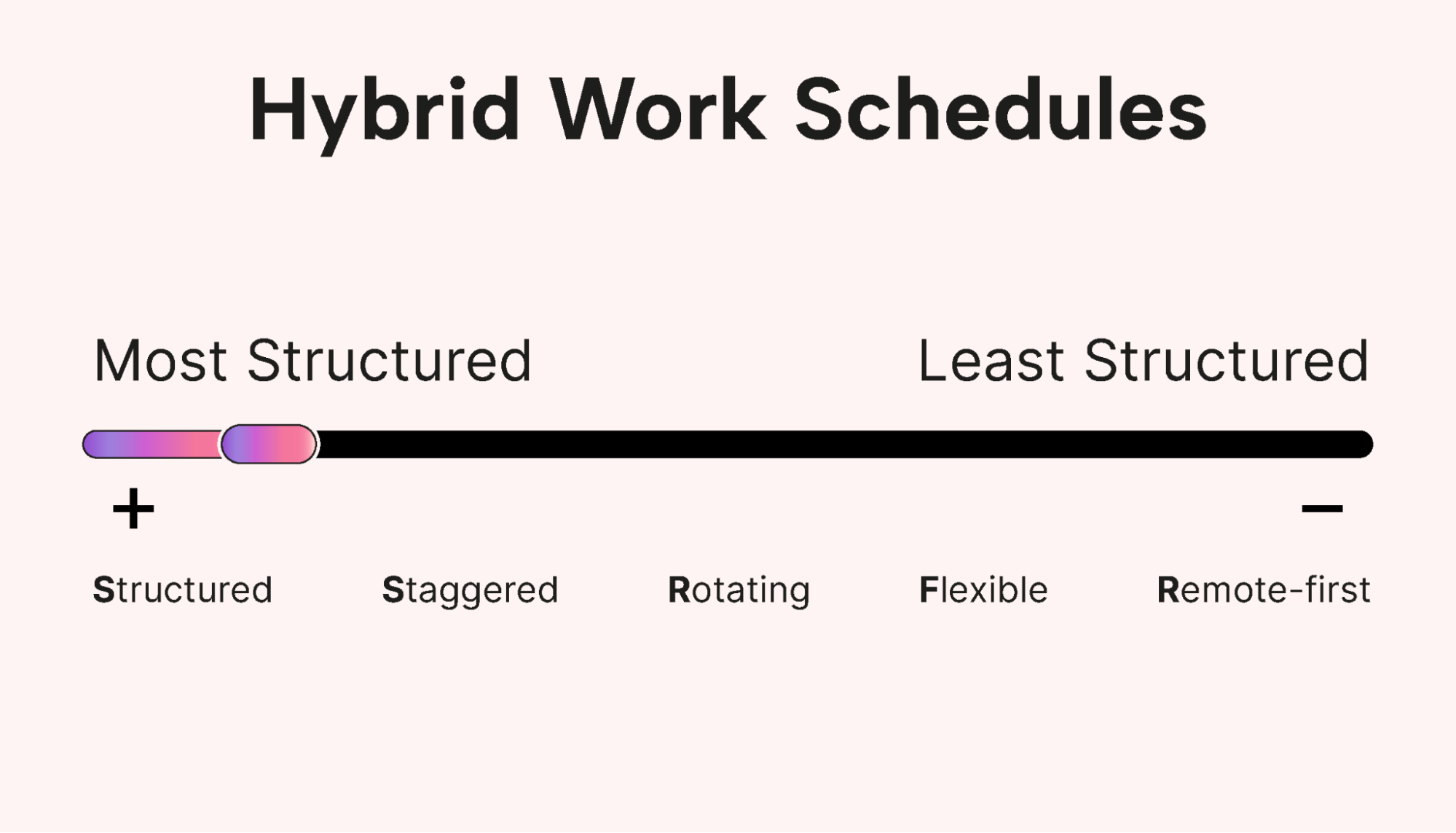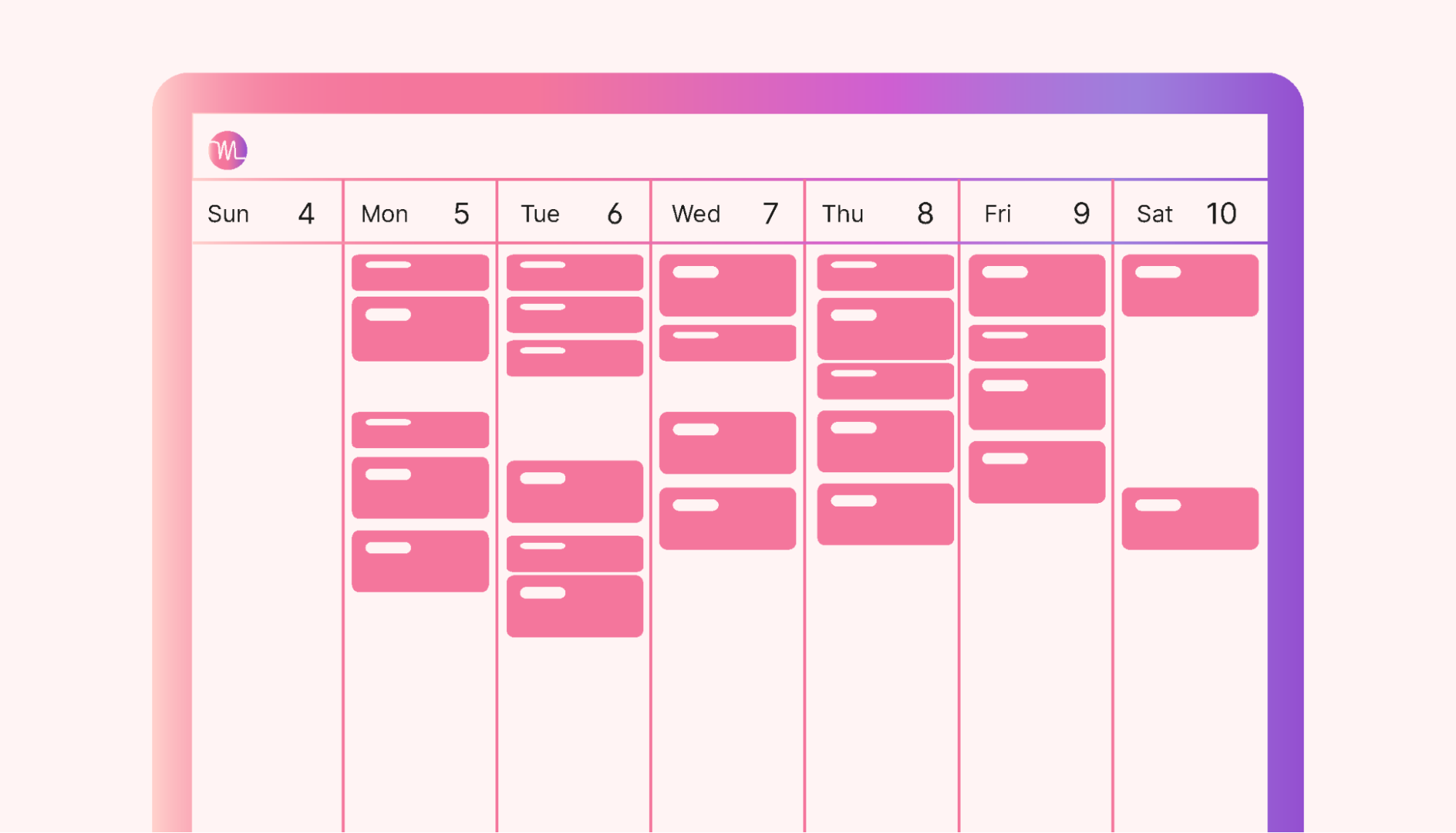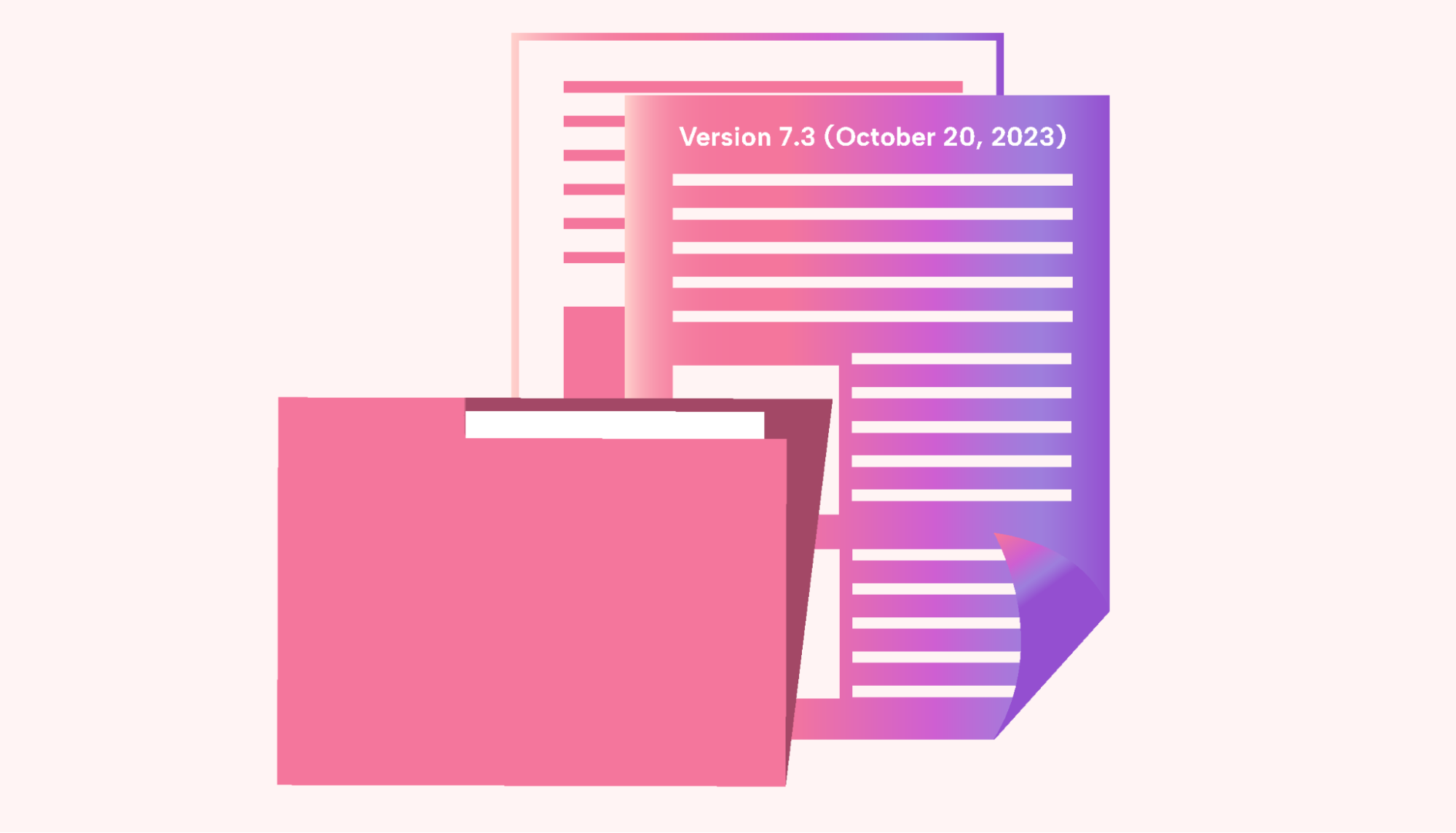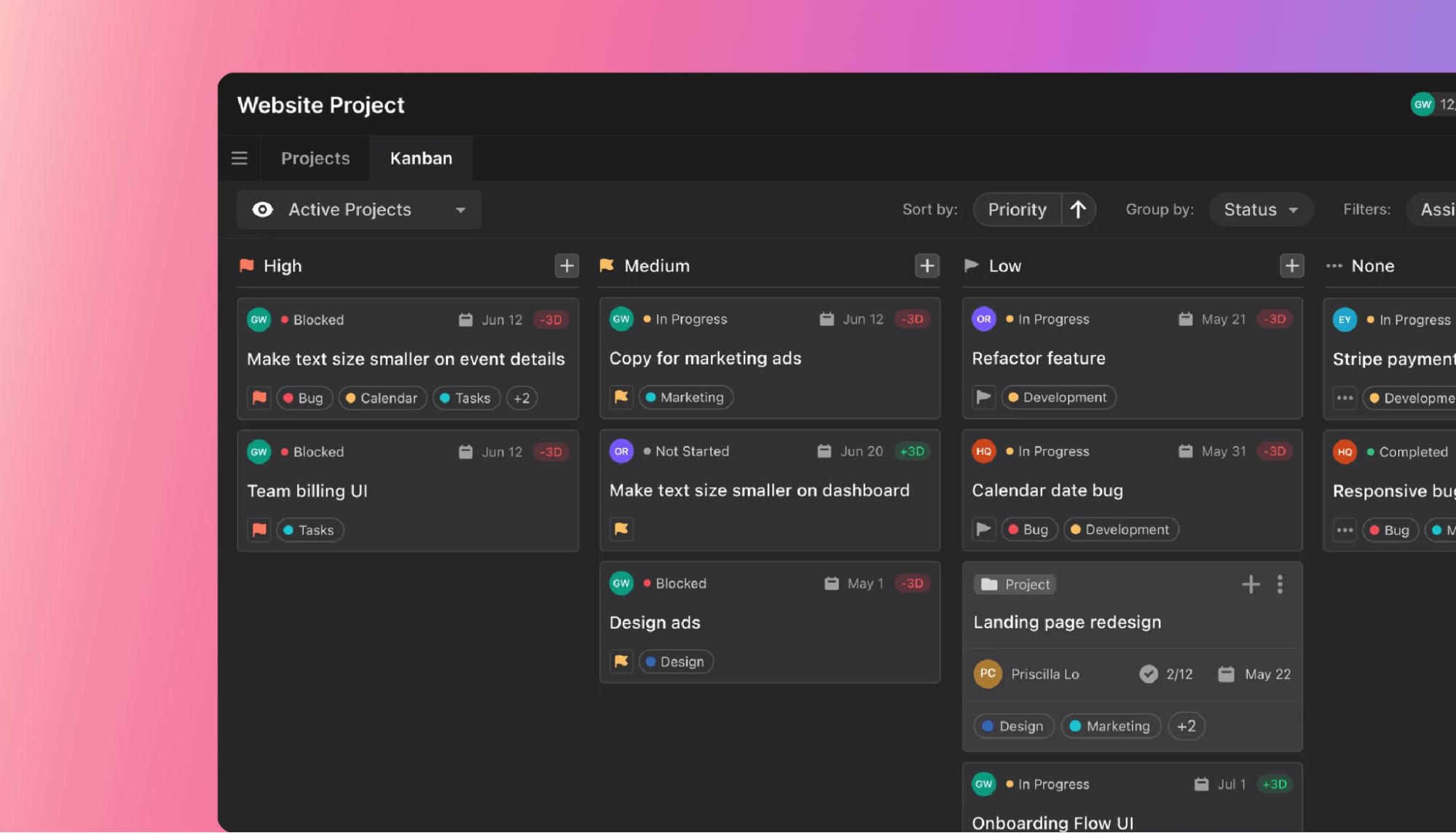Hybrid work arrangements are becoming increasingly popular. In fact, as of 2023, 28.2% of employees are engaged in some form of hybrid work.
Many employees appreciate hybrid work because it gives them more control over their time and the freedom to work from home. Employers like hybrid schedules because of the cost savings. Also, employers offering a flexible work schedule can attract and retain top talent.
But switching to a hybrid schedule is not without its challenges. With employees coming and going at different times — and, in a sense, becoming more invisible to management — companies need to have solid technology in place to efficiently and successfully manage this way of working.
This article explores online calendars and project management software — two types of technology that business owners should consider to support their hybrid work schedules and policies.
What is a hybrid schedule?
A hybrid work schedule is an arrangement where an employee works part-time in the office and part-time from home.
Hybrid models come in many shapes and forms.
Types of hybrid work schedules
Here are five basic schedule types that are characteristic of a hybrid environment. They’re arranged from the least flexible type to the most flexible type for employees.
- Structured hybrid schedules: This popular model has predefined days for remote work and time spent in the physical office space, laid out in consistent patterns. Often-used office schedules include two days on-site and three days remote, or vice versa.
- Staggered hybrid schedules: In this model, different teams stagger their office days and remote days. They are divided into cohorts, with each cohort having one or more designated days per week for in-office work.
- Rotating hybrid schedules: Rotating schedules alternate between remote and on-site work over specified timeframes, such as weekly or bi-weekly rotations.
- Flexible hybrid schedules: In this hybrid work approach, employees have the discretion to choose their remote and on-site days based on their tasks and preferences and can adapt their work arrangements week by week. Employees are empowered to optimize their productivity by selecting the most suitable work environment for different tasks.
- Remote-first hybrid schedules: In this flexible work arrangement, the default is remote work, with occasional scheduled on-site days for essential meetings or team gatherings. It encourages asynchronous collaboration and allows employees to work from anywhere.
 |
The more flexibility and freedom employees have in terms of their remote work schedules — and the more limited their connection to the office — the more important it is to have the right technical infrastructure in place to maintain employee collaboration, productivity, and satisfaction.
The benefits and drawbacks of hybrid schedules
Hybrid work arrangements offer great benefits for employees. Here are just a few that workers who’ve switched to flexible schedules often mention:
- More freedom and autonomy
- Reduced stress due to no need to commute and no need for challenging interactions with difficult coworkers or supervisors
- A better work-life balance and the ability to spend more quality time with family
These perks mean company owners often see better employee engagement, employee performance, and productivity.
On the other hand, when employees work part-time from home, new challenges pop up. Typical issues include the following:
- More potential distractions (spouses, children, pets, deliveries)
- Having to generate more self-motivation and focus (perhaps more than some employees can successfully muster)
- Blurred boundaries between work time and personal life (feeling like they’re always on call)
- The difficulty of staying connected with team members and team projects (feeling alone and abandoned)
Fortunately, modern software tools can help employers effectively deal with these challenges. From team communication and collaboration tools to time management and project planning, there’s an app for that!
2 essential tools for managing a hybrid schedule
In this section, we zoom in on two particular types of tools employers need to make hybrid schedules work: calendar apps and project management software.
These tools are widely used these days, but the question is, does the version you’re using help or hinder your hybrid and remote workers?
 |
Whether you’re switching to a hybrid schedule or you simply want to improve the support system you are using, review these lists of essential features of calendar and project management software so that you can provide your employees with the best possible tools for successful remote work.
Online calendars
The ideal online calendar for employees with hybrid schedules should possess specific features that support the unique demands of a hybrid work environment.
In particular, look for the following in your calendar and scheduling software:
Customizable work hours: Employees can set personalized work hours that consider their time zones and individual preferences for remote and on-site work.
Multiple calendar views: This feature offers various viewing options (day, week, month) to accommodate different preferences and give an overview of remote and on-site workdays.
Time zone support: This software feature automatically adjusts event times to the user’s time zone. It helps hybrid teams spread across different regions stay connected.
Labeling events: This function allows users to label events based on their location (remote or on-site) or type (meeting, task, presentation). This visual dimension increases clarity and provides a quick overview of when to be where.
Location indicators: These indicate the location (remote or office) for each event so that the participants can plan their days and interactions effectively.
Availability insights: This displays colleagues’ availability status (remote or on-site) in the calendar for simpler scheduling of virtual meetings and interactions.
Integration with communication tools: Integration with communication platforms, like Slack or Microsoft Teams, facilitates seamless transitions from calendar events to collaborative discussions.
Real-time updates: Make sure the calendar offers real-time synchronization across devices to prevent discrepancies in scheduling.
Collaborative scheduling: This function lets hybrid employees propose multiple time slots for meetings. It gives them the option to vote on the most suitable time so they can easily accommodate different schedules.
Smart, customizable notifications and reminders: This function sends notifications for both remote and on-site workdays, meetings, and tasks.
Task integration. This makes it possible for tasks to be associated with calendar events, which improves time management and allows for easier task planning.
Mobile app accessibility: A mobile app with full functionality gives employees the option of managing their hybrid schedules on the go.
 |
Syncing with project management: The calendar integrates with project management tools to align tasks and projects with workdays and availability.
Analytics and insights: This function generates data on time allocation, meeting frequency, and work trends so that both managers and employees can optimize their hybrid work strategies.
By incorporating these features, online calendars can effectively support the dynamic requirements of hybrid work arrangements, including collaboration, time management, and overall productivity.
Project management tools
Another area to look at for seamless hybrid work is project management software. This tool ensures employees can stay on track no matter what location they are working from.
Here are some essential features that online project management tools should have to best support a hybrid work environment:
Task and project tracking: This feature provides a central platform on which to create, assign, and track tasks and projects so that remote and on-site team members can collaborate well.
Customizable workflows: This function allows users to tailor project workflows to align with hybrid work schedules and team preferences.
Task dependencies: This feature shows task dependencies and timelines to visualize project progress and ensure tasks are completed in the right sequence.
Collaborative workspaces: In these virtual workspaces, team members can collaborate on projects, share documents, and communicate effectively.
Time tracking and reporting: This includes time-tracking features to monitor work hours and generate reports that reflect both remote and on-site contributions.
Communication integration: This function integrates communication tools, like chat and video conferencing, to facilitate real-time discussions around tasks and projects.
Document sharing and version control: This feature helps ensure consistent collaboration on files regardless of the employees’ work locations.
 |
Deadline reminders: This function sends automated reminders for task deadlines and project milestones, keeping everyone on track and accountable.
Flexible task assignment: This allows managers to assign tasks based on availability during remote and on-site workdays.
Remote progress updates: This feature enables team members to present remote progress updates on tasks and projects.
Remote and on-site event integration: Integration of project deadlines and milestones with users’ online calendars is done in a way that reflects employees’ hybrid work schedules.
Cross-functional dashboards: These dashboards display an overview of projects, tasks, and team availability across remote and on-site days.
Analytics and performance metrics: This function provides data-driven insights into project progress, team performance, and task completion rates.
Access control and security: This essential function protects sensitive project information.
Mobile app functionality: This feature makes it possible for team members to manage tasks and projects while away from the office.
Feedback and review tools: This function incorporates features for team members to provide feedback and review each other’s work, regardless of their physical location.
 |
Online project scheduling and management tools that include these many features can empower hybrid teams to collaborate effectively and achieve their goals regardless of their place of work.
Try Motion’s intelligent apps to support your hybrid schedule
Hybrid schedules benefit greatly from smart technology to keep remote workers connected and productive.
Motion’s AI-driven Intelligent Calendar and Project Manager are designed to give businesses maximum support for their hybrid work environment — and save you and your employees valuable time in the process.
Try Motion for free for 7 days and see for yourself how this software can make your hybrid workplace hum.





